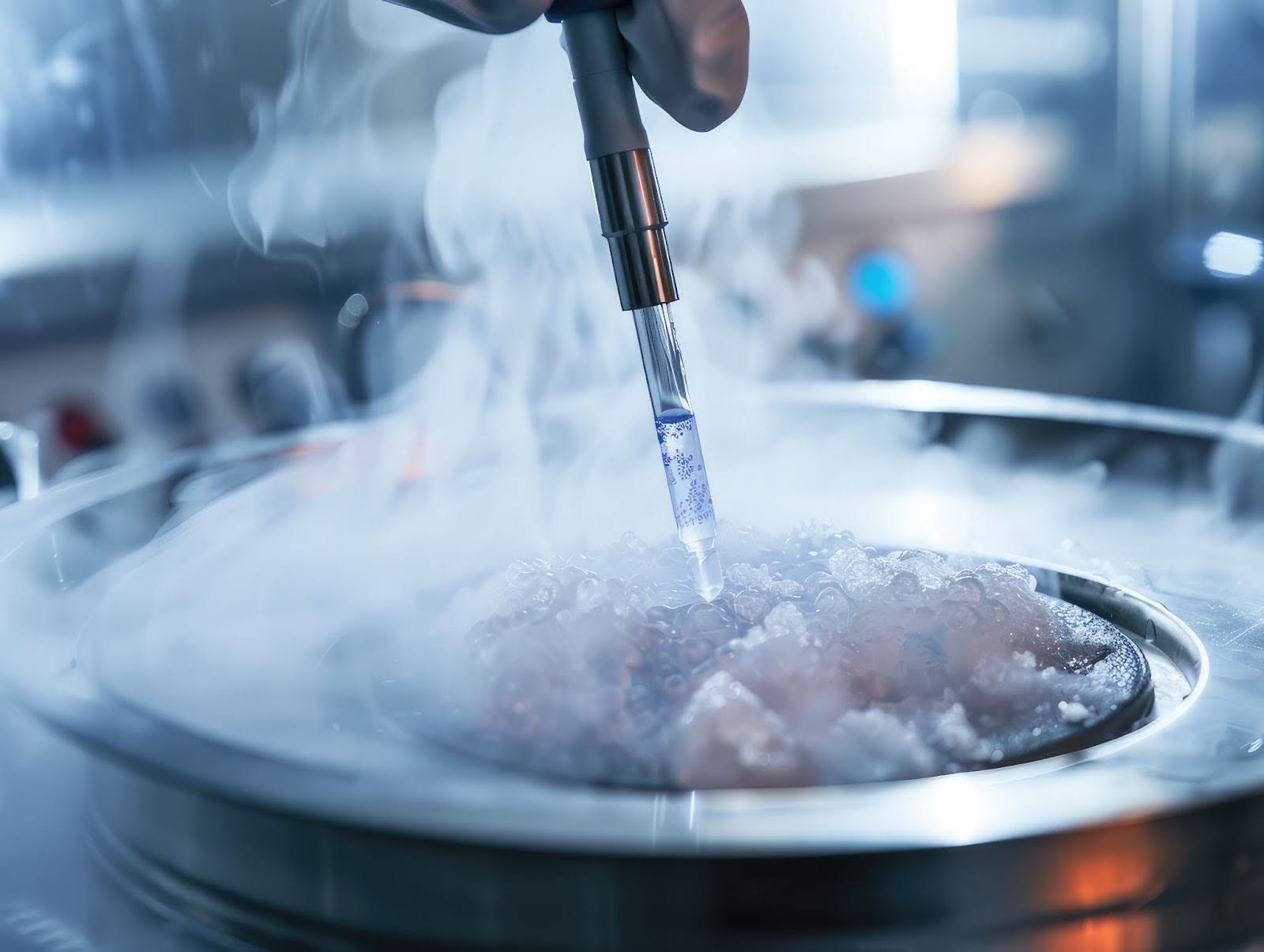by Mrudula Kulkarni
7 minutes
From the Bench to the Batch: How to Choose the Right Freeze Dryer (Lyophilizer)
From lab to production, learn how to choose the right freeze dryer with key features, types, and real-world pharma applications.

It started with a small discovery. A researcher at a biopharma startup sat staring at a cloudy vial of a fragile protein formulation that degraded overnight. The culprit? Improper drying. What they needed wasn’t just a drying method—it was a freeze-drying solution that could carry their discovery from bench-top trials to full-scale production without losing efficacy or integrity.
This is not a one-off story. It’s a recurring reality in labs and production units worldwide. And whether you’re running early-stage R&D or scaling up for clinical batches, choosing the right freeze dryer (also called a lyophilizer) can make or break your product pipeline.
Let’s walk through the journey—from benchtop to production scale—and explore what you need to look for at each stage.
Why Freeze Drying Matters More Than You Think
Freeze drying isn’t just about removing water. It’s about preserving molecular integrity, increasing shelf life, and ensuring sterility for sensitive formulations—be it vaccines, biologics, injectables, or diagnostic reagents. That’s why lyophilization has become the gold standard in pharma and biotech.
And with increasing demand for cold-chain-independent formulations and biosimilar development, the pressure to get freeze drying right has never been higher.
Types of Freeze Dryers
Here are the Types of freeze-dryers widely used in the industry:
1. Bench-Top Freeze Dryer
- Description: Compact, lab-scale freeze dryer designed for small-batch lyophilization and R&D.
- Ideal For: Academic labs, R&D teams, and small biotech firms conducting feasibility or pilot studies on formulations.
- Features to Look For:
- Temperature range up to -80°C
- Compact footprint
- Transparent chamber for process monitoring
- User-friendly touchscreen interface
- Modular design to switch between flasks and trays
Benchtop systems like Labconco FreeZone and Martin Christ Alpha 2-4 offer exceptional control in a compact frame. These are often the gateway machines that help validate early-stage formulations.
2. Pilot-Scale Freeze Dryer
- Description: Mid-sized units that bridge the gap between bench-top and full-scale production, ideal for scale-up studies.
- Ideal For: Pharmaceutical companies transitioning from research to commercial production; CROs performing client trials.
- Features to Look For:
- Precise process control for scalability
- Advanced data logging and automation
- Shelf area flexibility for varying batch sizes
- Simulation of production-level conditions
- Cleanroom-compatible design (if needed)
Brands like Millrock Technology (REVO Series) and Telstar Lyobeta are known for their robust and precise systems, enabling seamless transition from R&D to GMP.
3. Production-Scale Freeze Dryer
- Description: Large, automated freeze-dryers designed for commercial-scale manufacturing of pharmaceuticals and biologics.
- Ideal For: Biopharma and vaccine manufacturers needing high throughput and regulatory compliance.
- Features to Look For:
- Large shelf area and high ice condenser capacity
- CIP (Clean-in-Place) and SIP (Sterilize-in-Place) systems
- Full cGMP compliance
- SCADA or PLC-based control systems
- Redundant safety systems and alarms
Production-scale freeze dryers like IMA Life Lyofast, Tofflon Industrial, and GEA RAY® are known for their modular builds, process safety, and superior automation—making them the go-to for high-stakes production environments.
4. Manifold Freeze Dryer
- Description: Freeze dryer that uses manifolds to attach multiple containers for bulk or multi-sample drying.
- Ideal For: Labs handling multiple small batches of vials, ampoules, or flasks at once.
- Features to Look For:
- High vacuum compatibility
- Flexible manifold configurations
- Fast freeze-drying cycles
- Adaptability for various container types
Labconco’s FreeZone systems and Martin Christ’s Alpha series are frequently used in biotech labs for manifold freeze-drying applications. Yamato Scientific also offers customizable manifolds ideal for multipurpose lab use.
5. Tray Freeze Dryer
- Description: Designed with shelves/trays to accommodate bulk materials or large sample volumes.
- Ideal For: Pharma companies drying powders, proteins, or bulk reagents in trays or bulk containers.
- Features to Look For:
- Adjustable shelf spacing
- Uniform heat transfer
- Easy loading and unloading design
- High capacity condensers
SP Scientific (SP Hull) and GEA Lyophil lead the field with their high-performance tray freeze dryers. Telstar’s LyoAlfa and IMA Life’s tray units offer modular designs tailored to specific process needs.
6. Rotary Freeze Dryer
- Description: Freeze dryer with rotating flasks or containers that enhance drying speed by improving heat transfer.
- Ideal For: Laboratories drying viscous materials or sensitive compounds needing gentle tumbling.
- Features to Look For:
- Controlled rotation speed
- Vacuum-tight rotary seals
- Enhanced mass and heat transfer mechanisms
- Compact rotating drum configuration
Yamato Scientific and Millrock Technology provide versatile rotary freeze dryers suited for experimental and pilot applications. Martin Christ also offers high-precision rotary models for viscous products.
7. Lyophilizer with Stoppering Mechanism
- Description: Freeze dryer equipped to stop and seal vials under vacuum, maintaining sterility post-drying.
- Ideal For: Injectable drug manufacturers and biotech firms producing pre-filled sterile vials.
- Features to Look For:
- Integrated hydraulic or pneumatic stoppering system
- Cleanroom-grade build materials
- In-line sterilization features
- Real-time process monitoring
OPTIMA Pharma, IMA Life, and GEA offer high-end lyophilizers with automated stoppering systems designed for injectable manufacturing. Azbil Telstar also integrates seamless vial sealing solutions within its aseptic lines.
Final Scoop: Think Long-Term, Not Just Output
Here’s the biggest takeaway: Your freeze dryer should grow with your process, not restrict it.
Whether you’re handling peptide APIs, probiotics, liposomal drugs, or biologics—process scalability, sample stability, and compliance should guide your decision.
The freeze dryer isn’t just another machine. It’s the guardian of your product’s quality. Choose wisely—and you don’t just preserve molecules; you preserve market reputation.
FAQs
Q1. What are key factors to consider when selecting a pharmaceutical freeze dryer?
Chamber size, shelf area, condenser capacity, control systems, clean-in-place (CIP) and steam-in-place (SIP) features, and automation integration with MES or SCADA systems.
Q2. How do I validate a new freeze dryer for pharmaceutical production?
Validation includes installation qualification (IQ), operational qualification (OQ), and performance qualification (PQ), along with cycle development and product-specific freeze-drying protocols.
Q3. How do automation and PAT tools improve lyophilization?
Automation, process analytical technology (PAT), and real-time monitoring optimize cycle parameters, reduce variability, and enhance compliance with FDA and EMA guidelines.
Q4. How can I reduce freeze-drying cycle time without compromising quality?
Cycle optimization techniques like controlled nucleation, thermal mapping, and PAT tools can shorten drying while maintaining critical quality attributes (CQAs).
Q5. Can single-use technologies be integrated with lyophilization?
Emerging designs allow integration with single-use fluid handling for pre- and post-lyophilization stages to reduce cleaning and contamination risk.




